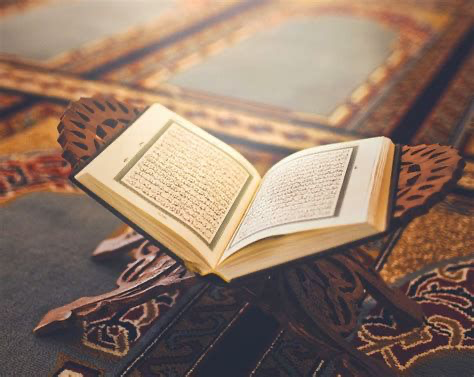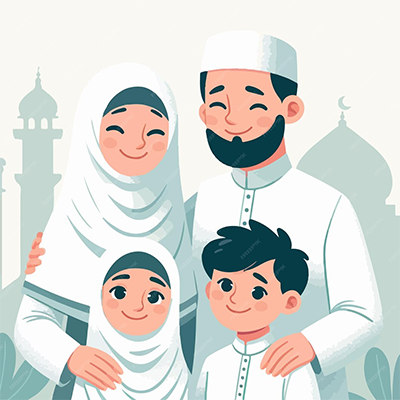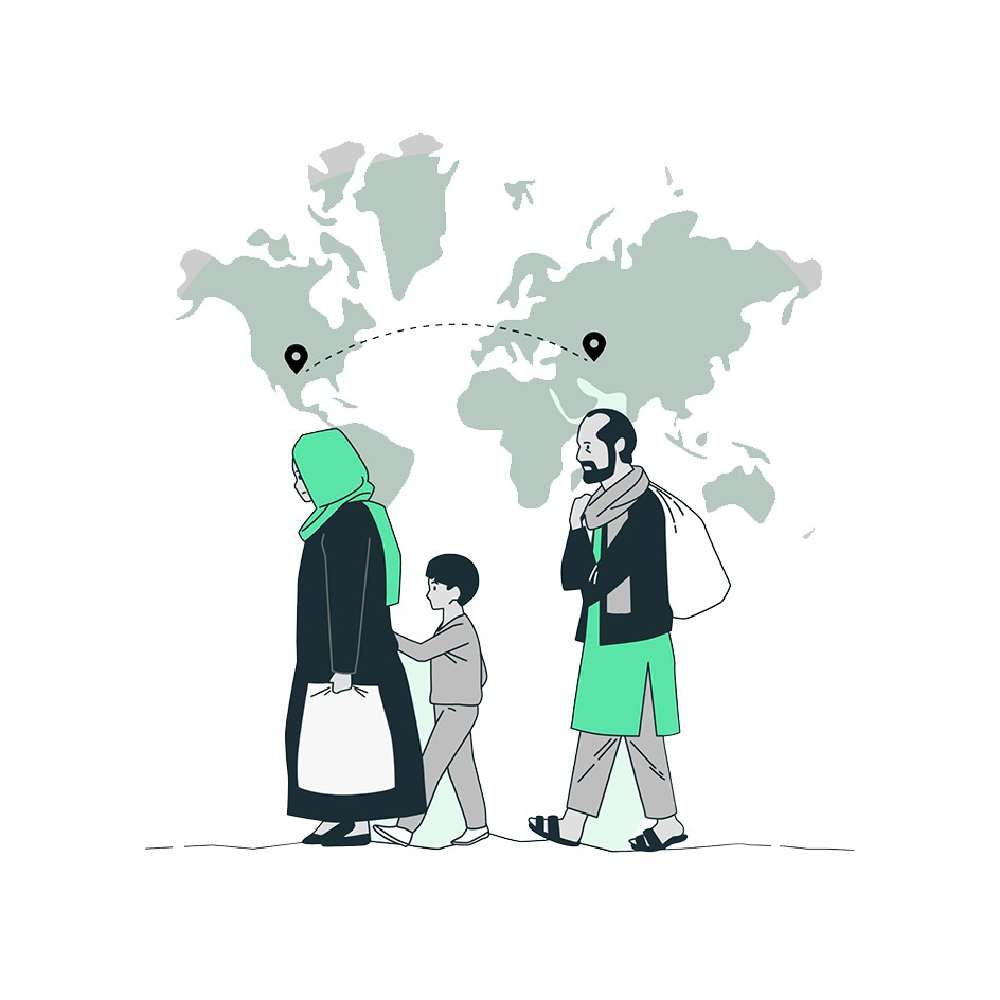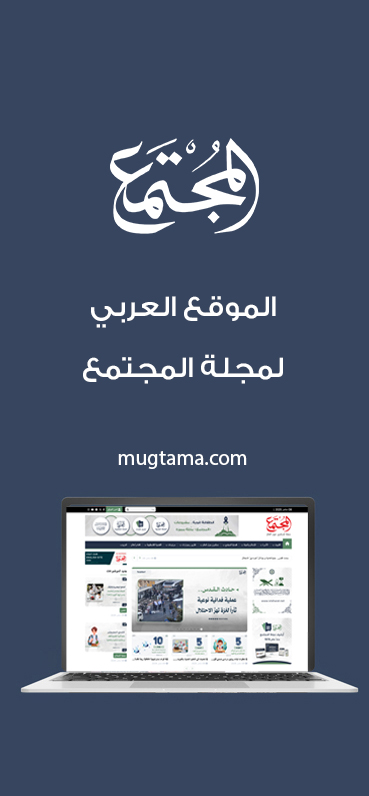Is Hijab a Symbol of Empowerment or Oppression?
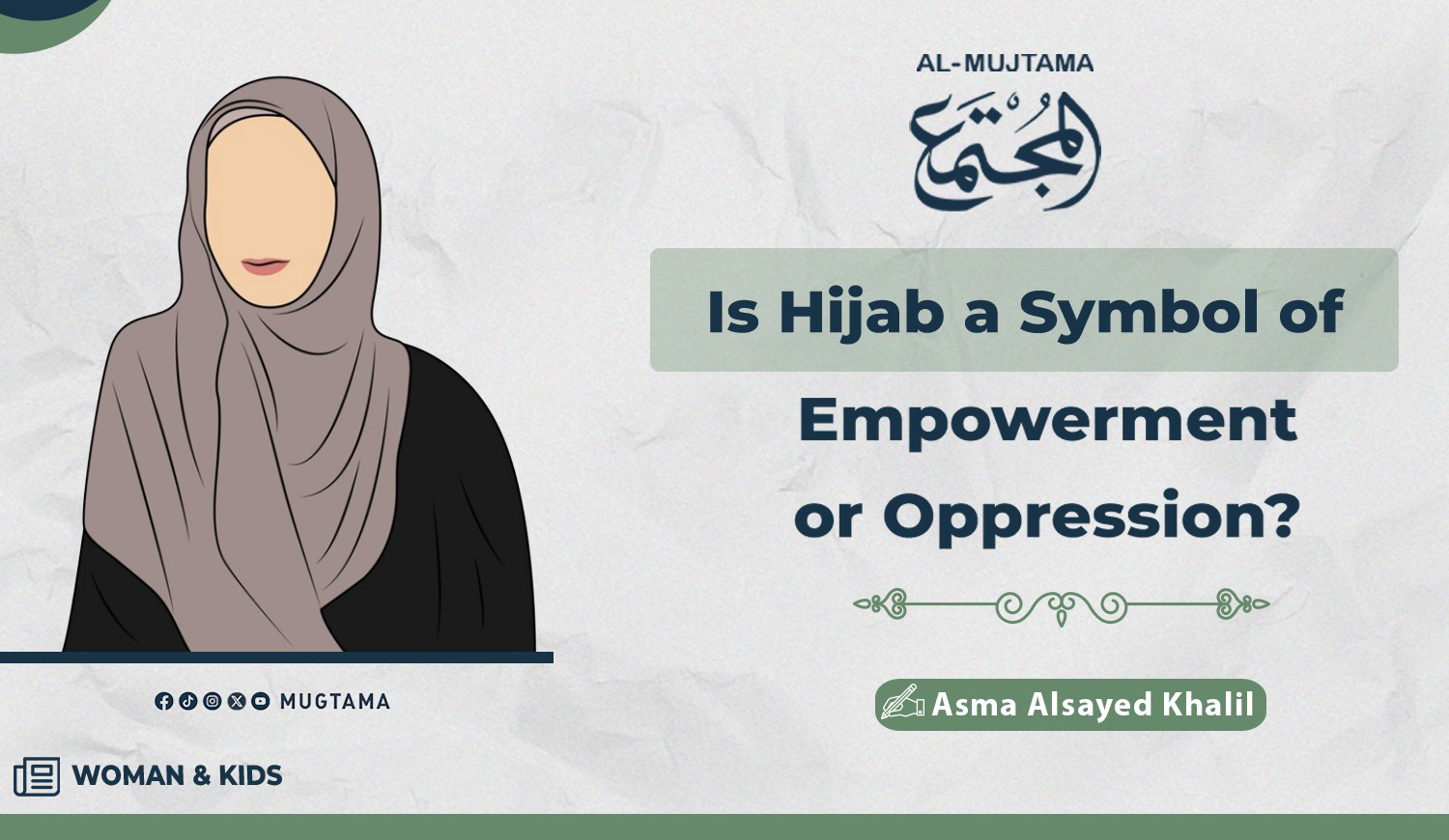
Opponents of Islam claim that our
religion restricts women’s freedom of thought and choice by imposing hijab,
alleging that it suppresses women’s potential and leaves them captive to
ignorance.
In response, Islamic scholars
emphasize that Islam seeks to build safe societies, free from immoral mixing
and sexual chaos that degrade humans from honored beings, whom Allah has
elevated above creation, into creatures consumed by lusts and desires.
Therefore, Islamic Sharia
regulates what should be covered and what can be shown of both men’s and
women’s bodies. It forbids words and actions that spread indecency, prohibits
nudity, and closes doors to temptation, most of which come through displaying
beauty and immodesty. Allah says, “And abide in
your houses and do not display yourselves as [was] the display of the former
times of ignorance.” (Surah al-Ahzab 33:33)
He also commands lowering the
gaze for both men and women: “Tell the believing
men to reduce [some] of their vision and guard their private parts. That is
purer for them. Indeed, Allah is Acquainted with what they do. And tell the
believing women to reduce [some] of their vision and guard their private parts
and not expose their adornment except that which [necessarily] appears thereof.”
(Surah An-Nur 24:30-31) And the Prophet (peace be upon him) said: “Do not give a second look, ‘Ali, for while you are not
to blame for the first you have no right to the second.” (At-Tirmidhi)
Why Did Islam Prescribe Hijab?
Islam obligated hijab because
women are naturally a source of attraction for men. A woman’s innate desire is
to beautify herself and display her adornment, while men are naturally inclined
toward women and captivated by them.
By prescribing hijab, Islam
protects societies from the corruption of immodesty and the chaos seen in other
communities. It elevates Muslim women, keeping them away from resembling slave
women of the past who were exposed in markets. It shields them from predators
lurking to exploit them.
Moreover, Islam is not the first
among religions to prescribe Hijab. Hijab was known in the time of Prophet
Ibrahim (peace be upon him) and was part of many other faiths. Even the face
veil, covering the whole face, existed historically. Covering one’s private
parts is also part of human nature as Allah says, “O
children of Adam, We have bestowed upon you clothing to conceal your private
parts and as adornment. But the clothing of righteousness - that is best. That
is from the signs of Allah that perhaps they will remember.” (Surah al-A‘raf
7:26)
The Qualities of Muslim Women’s Hijab
Islam requires women’s clothing to cover the whole body except the face and hands, be modest, not tight or transparent, and not resemble men’s clothing. It should not be flashy or perfumed.
This type of hijab does not
prevent a woman from leaving her home, working, or pursuing education to the
highest levels. There is no link between hijab and ignorance, nor between
uncovering and knowledge. The purpose of hijab is to protect, honor, and free
women from false limitations. It is a symbol of dignity and virtue.
Women’s Participation in Public Life in Islam
Islam permits women to
participate in public life, voice their opinions, and engage with men in work
and discussions, within Islamic guidelines: lowering the gaze, modest dress,
respectful speech, avoiding seclusion with men, and maintaining shyness and dignity.
While Islam sets clear boundaries
between genders, it strongly opposes those who abolish these limits, because
that leads to moral decay, social crises, and countless destructive diseases.
Unlike the West, where widespread immorality results in suffering, Islam
protects life and honor.
Misunderstandings About Women in Islam
Islam’s opponents and hypocrites
push for absolute freedom, spreading immorality and eliminating virtue. On the
other hand, some Muslims go to the extreme by restricting women in ways not
prescribed by Islam.
Some forbid women from leaving
their homes except for marriage or burial, ignoring Qur’an and Sunnah examples
of women working, serving, and mixing within the boundaries of Islam. Allah
describes the women of Madian: “And when he came to
the well of Madyan, he found there a crowd of people watering [their flocks],
and he found aside from them two women driving back [their flocks].” (Surah
al-Qasas 28:23)
Others falsely claim that a
woman’s voice is awrah. Yet, during the Prophet’s time, women spoke to men,
asked questions about religion, went to the markets, narrated hadiths, wrote
poetry, and became scholars.
What is actually prohibited for a
Muslim woman is not to soften her speech, not to make her words tender, and not
to speak in a seductive manner with non-mahram men. This ruling is not due to a
lack of trust in women, but rather as a protection for them from corrupt men
who lack morals.
Is a Woman’s Face Awrah?
Some argue that a woman’s face is
awrah (something that must be covered). But this opinion requires clear
evidence. There is no explicit text in the Qur’an nor a clear statement from
the Sunnah that obligates covering the face. And if covering the face had truly
been an obligation, it would have spread widely and become something known in
the religion by necessity.
As Abdul Halim Abu Shaqqa writes
in The Liberation of Women in the Era of the Message (1995): “Uncovering
the face is part of the natural norms of human life. People, at all times, need
women to reveal their faces to identify those they are speaking with and their
circumstances, to encourage women’s participation in society, to allow for
community oversight, to reduce the intensity of temptation, to awaken modesty
in women, and to maintain a degree of psychological well-being.”
Women Uncovering Their Faces in Early Islamic Society
Indeed, uncovering the face was
the prevailing custom in the society of Muslims at the time of Prophet Muhammad
(peace be upon him). The Prophet commanded a suitor to look at the woman he
intended to marry. Muslim women would also go out to the mosque to pray while
their faces were uncovered. Aisha (may Allah be pleased with her) reported: “The believing women covered with their veiling sheets
used to attend the Fajr prayer with Allah's Apostle, and after finishing the
prayer they would return to their home and nobody could recognize them because
of darkness.” (Al-Bukhari and Muslim)
Furthermore, the Prophet (peace
be upon him) gave explicit permission for women to show their faces and hands. Aisha
(may Allah be pleased with her) told that when
Asma’ daughter of Abu Bakr came in to visit God's messenger wearing thin
clothes he turned away from her and said, “When a woman is old enough to
menstruate, Asma’, it is not right that any part of her should be seen but this
and this,” pointing to his face and his hands. (Reported by Abu Dawood)
For Further Reading:
- Feminism in Crisis… From Empowerment to Excess
- Women in Islam: Full Rights and Independent Personality
- How Islam Honors Women in the Hereafter?
-------------------------------------------------------------




